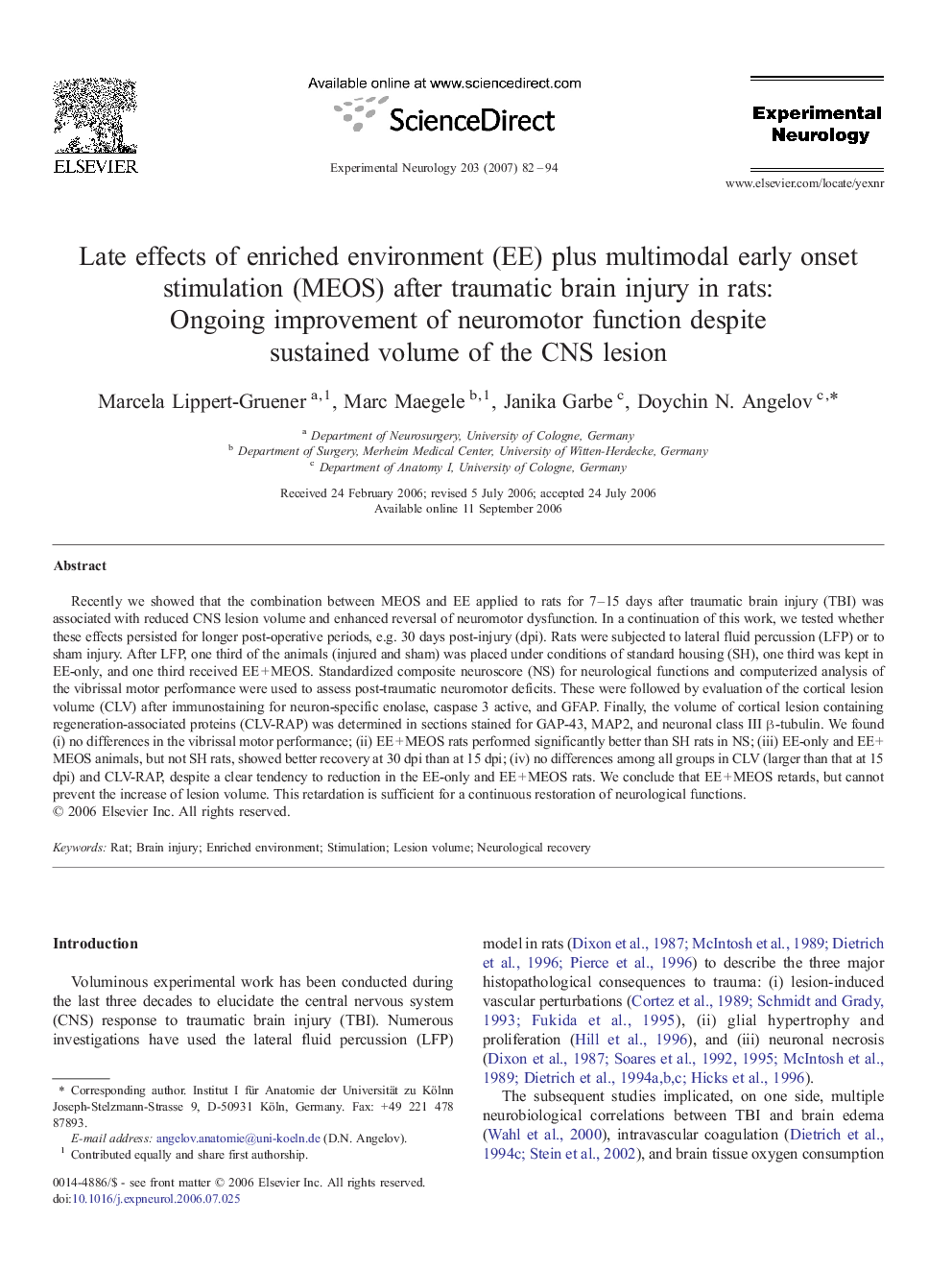| Article ID | Journal | Published Year | Pages | File Type |
|---|---|---|---|---|
| 3056937 | Experimental Neurology | 2007 | 13 Pages |
Recently we showed that the combination between MEOS and EE applied to rats for 7–15 days after traumatic brain injury (TBI) was associated with reduced CNS lesion volume and enhanced reversal of neuromotor dysfunction. In a continuation of this work, we tested whether these effects persisted for longer post-operative periods, e.g. 30 days post-injury (dpi). Rats were subjected to lateral fluid percussion (LFP) or to sham injury. After LFP, one third of the animals (injured and sham) was placed under conditions of standard housing (SH), one third was kept in EE-only, and one third received EE + MEOS. Standardized composite neuroscore (NS) for neurological functions and computerized analysis of the vibrissal motor performance were used to assess post-traumatic neuromotor deficits. These were followed by evaluation of the cortical lesion volume (CLV) after immunostaining for neuron-specific enolase, caspase 3 active, and GFAP. Finally, the volume of cortical lesion containing regeneration-associated proteins (CLV-RAP) was determined in sections stained for GAP-43, MAP2, and neuronal class III β-tubulin. We found (i) no differences in the vibrissal motor performance; (ii) EE + MEOS rats performed significantly better than SH rats in NS; (iii) EE-only and EE + MEOS animals, but not SH rats, showed better recovery at 30 dpi than at 15 dpi; (iv) no differences among all groups in CLV (larger than that at 15 dpi) and CLV-RAP, despite a clear tendency to reduction in the EE-only and EE + MEOS rats. We conclude that EE + MEOS retards, but cannot prevent the increase of lesion volume. This retardation is sufficient for a continuous restoration of neurological functions.
